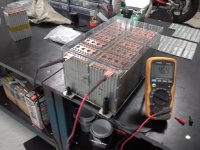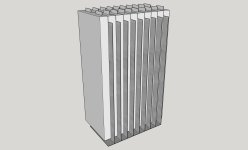jonescg said:Passing coolant through the busbars has been explored before, but the issue is when you have more than one series cell in your battery - you can't have a continuous connection between conductors at different potentials. Even using plastic tube as an insulating break between busbars is fraught, because the direct current will cause electrolysis, especially when an aqueous coolant is used.
Heat pipes aren't hollow busbars per se.
They are sealed units containing small quantities of liquid at low pressure. You connect one end to a heat sink and the other to your heat source, and they use the evaporation/condensation cycle to transfer the heat from one end to the other. They can have an equivalent thermal conductivity 100s of times higher than a simple copper bar or tube the same mass and length.
You would use 1 per parallel string, with one end of each thermally connected to the external case or other heat sink.
Other liquids besides water -- ammonia, alcohol etc. -- are possible for different heat ranges, but usually with aluminium rather than copper.



